|

Atom structure
This section is a continuation of the mass
formation section.
In this
section, the atomic structure of the universe is brought
together in a physical and mathematical system.
A brief review of
the history of the atom.
Rutherford discovered in approx. 1910 that the atom had
a nucleus by bombarding a foil of gold with alpha
particles.
Rutherford, Matenson and Giker have
done a series of experiments to determine the size of
the atomic nucleus.
I have made some calculations
using recognized classical physics to determine the size
of the atomic nucleus.
For the calculation I used Albert Einstein's formula E =
m * c2 which creates the connection between
nuclear mass and the energy of the nuclear mass and is
the formula m = V * c2 where V is the
volume of the universe (see the section universe and
conversion formulas).
The
deviation between the two results is not greater than it
can be considered ok
I therefore have no objection to
Rutherford, Matenson and Giker's results for the size of
the atomic nucleus
After Rutherford had found the nucleus of
the atom, it had to be integrated into the atom known at
the time.
There have been some different
proposals and it was agreed to use Rutherford's
proposal, which has also been called the planetary
model, which in short is that the sun corresponds to the
nucleus of the atom and the electrons revolve in some
orbits around the nucleus just like the planets.
The problem is that it was over 100 years ago and to
date no one has observed or recorded any electrons
orbiting the atomic nucleus.
The argument is that the
electron is very small and moves at such a high speed
that it cannot be observed or recorded, i.e. invisible.
From the point of view of the tangible physical
and mathematical evidence, this is not acceptable under
normal conditions.
They have
also added a charge system to the atom, where
the proton has a positive charge and the electron a
negative charge and both charges have the same value
with opposite signs.
One of the problems is that the
mass of the proton is approx. 2000 times greater than
the mass of the electron, but has the same charge with
opposite sign.
According to Albert Einstein's formula
for the relationship between nuclear mass and energy E =
m * c2, mass and energy are not compatible with this
concept of charge.
From the point of view of tangible
physical and mathematical evidence, this is not
acceptable under normal conditions because the universe
is a self-developing and self-adjusting system and there
cannot be two systems that do not fit together and that
it is Albert Einstein's system that is best
substantiated
It is my assessment that those who deal
with nuclear physics are well aware of the problem,
which also has consequences for the field of radiation,
because all radiation comes from atomic nuclei. Many
have tried in every possible way throughout the last 100
years to find a workable solution to the problem, but
without success. That is why the old system has not been
changed.
The
system that I use
Just like many
others, I have done some experiments with atomic nuclei,
although a little differently, in that I have left the
charge system and chosen that all neklions in the
nucleus have the same standard value.
The result did
not give a clear answer, but a clue towards a bond
structure which can also be seen in the bond structure
of alpha particles and the reaction in unstable
isotopes.
I realized 30 years ago that guessing about this will
not lead to any results.
In order to solve the
problem, it is necessary to address the root of the
problem and it is therefore necessary to find out how
the universe has created its mass and energy and how
they interact with each other.
I have made a
first draft of the nucleus of the atom using micro
physics
The nucleus of the atom contains a number
of functions that are an integral part of the way the
atom works (mass attraction, radiation and the atom's
stabilization system and more)
The universe
is a self-evolving and self-adjusting system.
All the
mass we know of in the universe comes from atoms and is
therefore closely linked to the main function system of
the universe.
The universe can (not surprisingly)
only create an active particle which I call a basic
particle and is the building block of everything.
There are two particles which are stable at rest, a
proton and an electron which are stabilization points of
the base particle, also known from accelerator physics.
The particle we need is the proton, it looks like this.
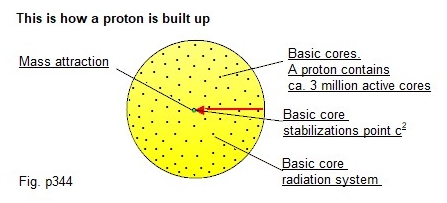
A basic particle is stable at the speed of light,
which is (gamma radiation) the reference point of the
universe.
When the basic cores are tied together in a
network, the reference point is moved to the center
point c2
If the base core loses contact with the
network it will turn into gamma radiation.
The
basic particle is an important part of the way the atom
works, because it stabilizes unstable atomic nuclei so
that they are stable again.
It is also the bonding
system of the basic nuclei that creates the mass
attraction of the atom.
The main system of the
universe indicates that there are no other systems that
can create mass attraction.
The main system of the
universe also indicates that radiation comes from the
basic nuclei of the atom and that there are no other
forms of radiation. We will not go into this further
here.
The proton cannot be created synthetically
because its bonding structure was created in connection
with the Big Bang's evolutionary system.
Note:
that the main system of the universe indicates that mass
attraction and radiation are an integral part of the
structure of the proton and fits with what we observe in
connection with protons and the structure of the atomic
nucleus.
I show here why mass attraction grows
towards the center:
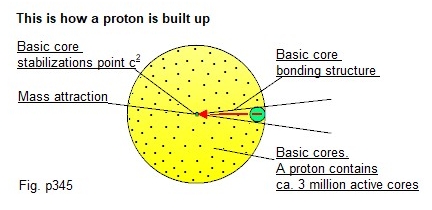
At the particle's periphery is the point of
intersection. Towards the center the mass attraction
increases and decreases in the opposite direction.
When the main system of the universe works that way, it
is because the number of point vectors in a sphere grows
in a locked bounded volume if the volume is reduced
(conservation of energy), in this case center reduction.
It is a basic compiler part in the main function of the
universe which is found in all solar systems, galaxies
and black holes which are also max. stabilization point.
We therefore also have it in all forms of nuclear
physics
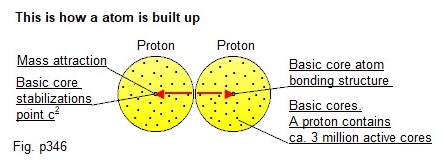
An atomic nucleus is stable when all nucleons in the
atom's nucleus; center-vector point points to c2 .
The mass attraction causes a slight shift in the center
point c2 and the atomic nucleus therefore becomes
unstable.
The basic nuclei of the atom adjust and
restore the center point c2 by redistributing the basic
nuclei in the nucleus of the atom. This will always
cause the number of base nuclei to decrease and be
released from the nucleus in the form of gamma
radiation.
The atom's nucleons will lose mass in
connection with the alignment.
The proton is still an
adjustment point and can be seen in conjunction with
neutron decay.
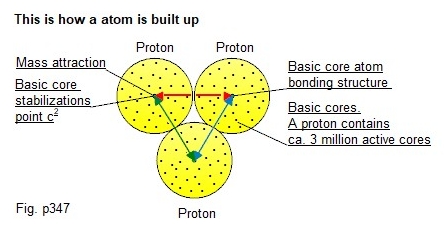
An atomic nucleus is an isolated system. If the
center point is affected, all nucleons in the atomic
nucleus are affected and must be adjusted so that the
nucleus is stable again.
If a basic nucleus loses
its connection to the atomic nucleus's bond network, it
will become gamma radiation, therefore the nucleons must
touch each other to create a bridge so that the basic
nuclei can flow freely throughout the nucleus and carry
out the necessary stabilization.
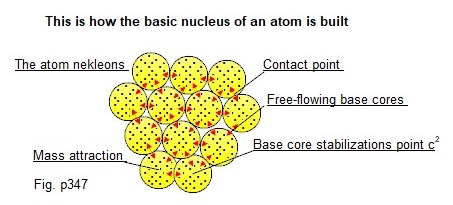
The entire process looks like this:
If a
particle, another atomic nucleus, is shot into the
nucleus, it always becomes unstable.
The atomic
core's base cores will begin a stabilization process.
The common process is that the core only needs to adjust
the core with base cores.
The process can proceed in
several rounds, if the first attempt only gives a
limited stability, We get here a series of unstable
between cores.
The core has a number of
stabilization links A, B, C, D, E binding links, where
the A link is the strongest link, max. 4 nucleons and is
equal to an alpha particle.
When a stabilization
process releases an alpha particle from the nucleus, it
is a fission process.
At the heavy end of atomic
nuclei we also have D and E links which are the weakest
links and here we see many fission processes, especially
alpha particles.
The nucleon mass decreases until
Fe 56, after which it increases. This process, I
currently do not have a clear overview of what the cause
is, but it has something to do with an intersection or a
stabilization point in the process.
If we look at
the nuclear properties of the atom, mass attraction,
radiation, the instability and stability function of the
nucleus, bond structure, fusion, fission, the atom's
connection with the molecular system and more, then it
fits with what the main system of the universe points to
Have a good day.
................
|
 |

The
Universe.
Classic
big bang.
Mass
formation.
Atom
structure.
Molecular
binding.
Particle
riation




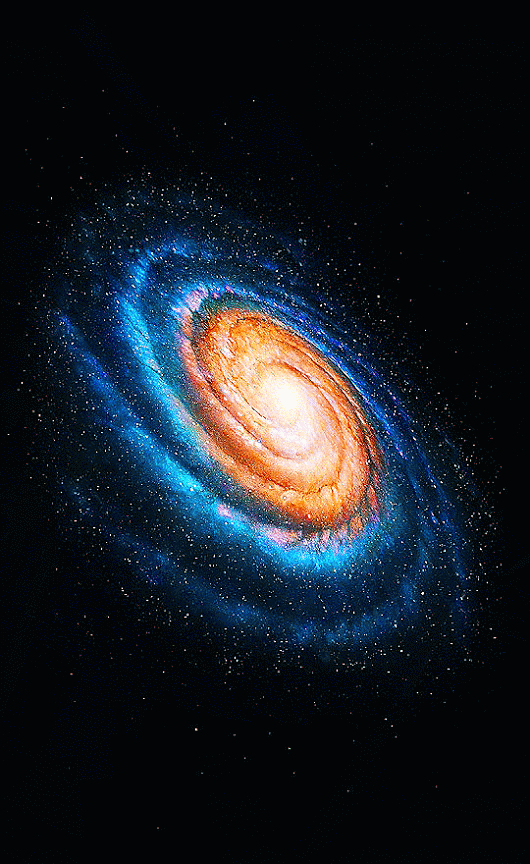

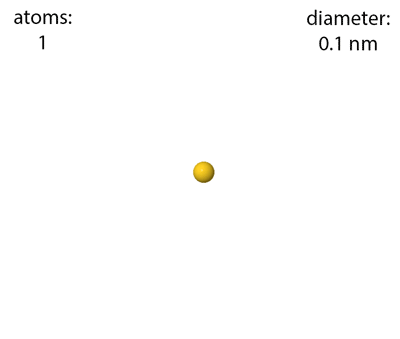

|